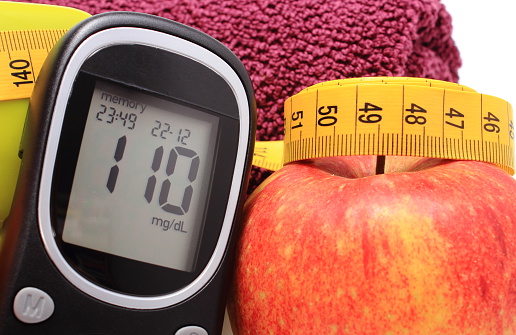10 Sneaky Risk Factors for Prediabetes You Need to Know
Article posted in: Lifestyle
Prediabetes is a condition in which your blood glucose—aka blood sugar—is higher than it should be. It’s not full-blown diabetes, but for many people it’s the first sign that type 2 diabetes may be on its way unless measures are taken to prevent it.
Prediabetes is generally symptom-less, but it can be detected with a fasting blood glucose test. According to the American Diabetes Association, a normal fasting blood sugar is fewer than 100 milligrams per deciliter. Between 100 and 125 milligrams per deciliter is considered an indication of prediabetes, and anything above that is an indication of type 2 diabetes.
Prediabetes can also be detected with an A1C test, which measures your average blood sugar for two to three months. The advantages of being diagnosed this way are that you don’t have to fast or drink anything. For A1c, consider less than 5.7 percent normal and 5.7 to 6.4 percent prediabetes. Anything over 6.5 percent is diabetes.
The good news is, you can prevent or delay type 2 diabetes by staying at a healthy weight, eating well and being active. With these steps, you can stay healthier longer and lower your risk of diabetes. And, if you know the risk factors for prediabetes, you can stay ahead of the curve.
So how do you know if you’re at risk of developing diabetes?
These are the major risk factors for prediabetes:
1. Bad Diet
Consuming red and processed meats, and drinking sugar-sweetened drinks like soda are associated with an increased risk of prediabetes. On the other hand, sticking to a diet that’s full of fruits, vegetables, whole grains and healthy fats like nuts and olive oil is associated with a lower risk of prediabetes. By adopting healthier eating patterns, you can reduce your risk of developing prediabetes and possibly lose some weight at the same time! Not so cool in the kitchen? Try a program like Nutrisystem, which offers perfectly portioned, prepared foods designed for weight loss. Click here to get started >
2. Polycystic Ovary Syndrome
Polycystic ovary syndrome (PCOS) is a fairly common affliction in women. You can catch this risk for prediabetes, by staying attune to the most identifiable symptoms—increased hair growth, obesity and an inconsistent menstrual cycle. If you are diagnosed with PCOS, you may want to request that your doctor run some blood tests to ensure you do not also have prediabetes or diabetes.
3. Wide Waistline
Men with a waist size greater than 40 and women with a waist size pushing 35 are more likely to develop insulin resistance, a precursor to diabetes. Use a measuring tape to take your middle measurements. Need some help figuring out how to measure correctly? We’ve got you covered with this article.
4. Too Much Body Weight
Weight is a risk factor for many health issues (Read this article on 10 Reasons to Lose 10 Pounds and you’ll know what we mean!), and prediabetes is no exception. When the scale starts creeping up, so does the amount of fat in our bodies. According to the Mayo Clinic, the cells in the body become more resistant to insulin as the amount of fatty tissue, squeezed between our muscles goes up. Losing about five to seven percent of your body weight can help cut risk for prediabetes in half!
5. Lack of Exercise
Have you become a total couch potato? Spending all day sitting around doesn’t do anyone any good. Physical activity is one of the best ways to put the glucose your body creates by breaking down food to good use. Plus, it helps make your cells more sensitive to insuln. Even better: Moving more promotes weight loss, so by honing in on this risk factor, you’ll get double the benefits—removing two prediabetes risk factors at one time. In fact, the Harvard Nurses’ Study revealed that a brisk walk for half an hour a day can slash diabetes risk by 30 percent.
6. Older Age
Maybe you’re mind feels 25, but your body knows the truth… and prediabetes holds you to it. According to the Mayo Clinic, the risk of prediabetes increases after age 45. But just because you’re 40- (or 50-, or 60-) something doesn’t mean you’re doomed to diabetes. Many experts contend that this trend occurs because people tend to exercise less, lose muscle mass and gain weight as they get older. So stay active, include some resistance training in your regimen, and watch your weight, and you could cut this risk.
7. Race
Certain races are actually more likely to develop prediabetes than others. If you are African American, Hispanic, Native American, Asian-American or Pacific Islander, you may be at higher risk than other races. While this association is not very well understood, it’s a reason to take extra precautions.
8. Family Medical History
If your brother or sister, mom or dad, has type 2 diabetes, there’s a stronger possibility that you might run into this health issue at some point than those with no family history of the condition. Risk for prediabetes increases for those that have family history tied to blood sugar related health complications.
9. Gestational Diabetes
Women that experience gestational diabetes during pregnancy are more likely to develop prediabetes. Additionally, according to the Mayo Clinic, if you gave birth to a baby who weighed in at more than nine pounds, you’re at greater risk of developing prediabetes. And men, you’re not necessarily off the hook from this one either. This increased risk for prediabetes extends to the children of women that had gestational diabetes during their pregnancy.
10. Inadequate Sleep
Restless night? Find out if you have obstructive sleep anea. This sleep disorder, among other conditions causing sleep disruptions, is a recipe for insulin resistance.
The Good News
If you’ve been diagnosed with prediabetes, it doesn’t mean you will automatically develop type 2 diabetes. Some people with prediabetes who receive early treatment see their blood glucose levels return to the normal range.
According to the American Diabetes Association, research suggests that you can lower your risk for type 2 diabetes by 58 percent by:
- Losing seven percent of your body weight (or 15 pounds if you weigh 200 pounds)
- Exercising moderately (such as brisk walking) 30 minutes a day, five days a week
Can’t quite get to that ideal body weight? Losing even 10 to 15 pounds can make a huge difference. (Learn how to drop up to 13 pounds in your first month on the Nutrisystem program* here).
Want to manage your diabetes and avoid sugar spikes eating delicious, lower-Gl foods? Nutrisystem® D® is for you! Click here to learn all about it >
For more information on how to avoid diabetes, click here >
*In a study on the standard plan, average weight loss was 9.9 lbs. in first month.













